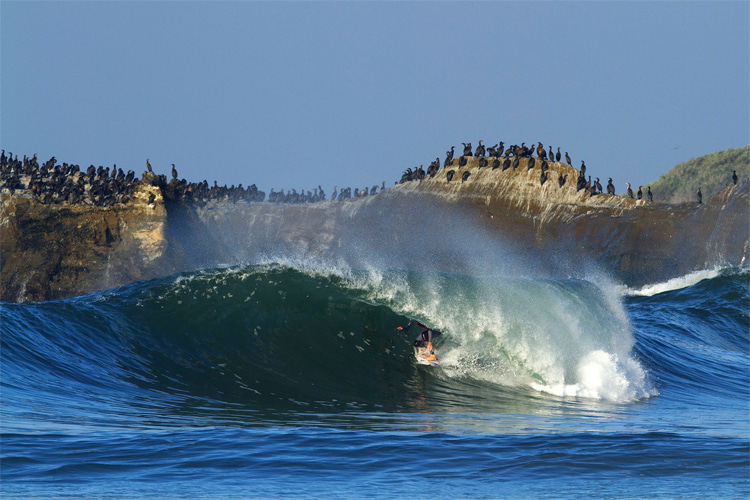A World Surfing Reserve (WSR) is a program launched by the non-governmental organization Save the Waves Coalition (STW) in 2009.
Its mission is to protect outstanding surf breaks around the world by recognizing and preserving key environmental, cultural, and economic attributes in coastal communities and their surrounding environments to protect them from the threat of development.
The WSR serves as a model standard for preserving wave breaks and their surroundings.
The organization also creates protected areas through its WSR program and Surf Protected Area Network (SPAN), manages projects to encourage coastal stewardship, and mounts international campaigns to defend surf ecosystems under threat.
The designated surf spots are considered to be the most iconic waves on the planet.
Therefore, a World Surfing Reserve is a designation given to a stretch of coastline that is recognized for its exceptional surfing resources and unique wave ecosystems.
The WSR program is the only global recognition program of its kind and is only granted by STW.
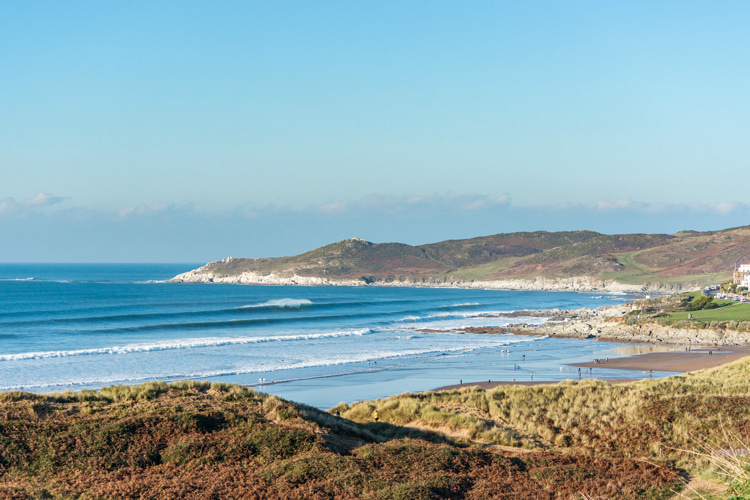
Application and Criteria
The application process for a World Surfing Reserve involves significant work from local communities. The process starts with submitting a Letter of Inquiry, which is then reviewed.
If the Letter of Inquiry is approved, the applicant is invited to submit a full proposal.
The core criteria considered during the application process include the following variables:
- Quality and consistency of the wave(s);
- Important environmental characteristics;
- Culture and surf history;
- Governance capacity and local support;
- Priority conservation area;
Impact on Surf Zones
The designation of surf spots as WSR helps restrict activities such as infrastructure development, oil and gas exploration, and fishing that could harm the environment and the quality of surf spots.
This serves as a move towards more sustainable and environmentally responsible coastal communities.
The WSR program recognizes and protects vital environmental, cultural, and economic attributes in coastal communities, creating protected areas and promoting coastal stewardship.
Research sponsored by the Centre for Blue Governance at the University of Portsmouth suggests that the designation of surf spots as wave reserves positively impacts coastal ecosystems and contributes to a more sustainable world.
There are currently 12 approved and 12 dedicated World Surfing Reserves.
Malibu, California (2009)
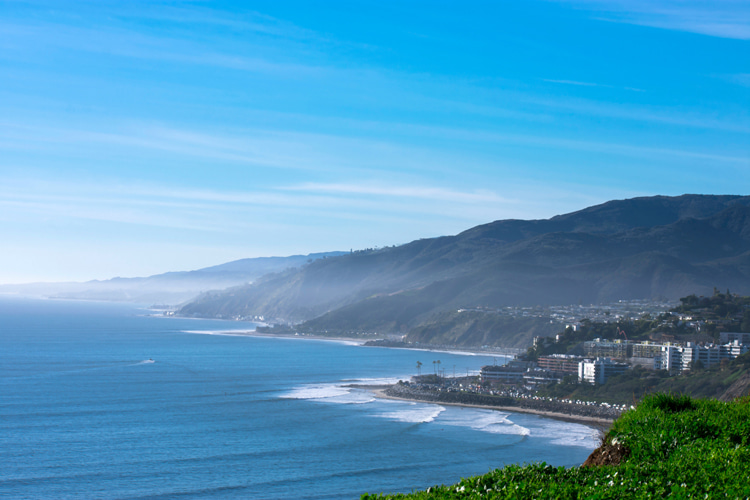
Malibu is a right-hand point break famous for its perfect waves.
It was chosen to be the first World Surfing Reserve because of the outstanding quality of the waves, its part in the start of modern surf culture, the diverse wildlife in the wetlands, and the locals committed to protecting it.
It is blessed with a consistent south swell, creating waves of eight feet to double overhead on its biggest days.
The waves can travel up to 100 yards from Second Point to Malibu Pier. It was a major center of surf culture in the 1950s and 1960s.
"Gidget," a book and movie, helped to bring more people to the sport and was set in Malibu.
The shapers who designed the first high-performance surfboards, like Bob Simmons, Joe Quigg, and Matt Kevlin, created their inventions in Malibu.
Miki Dora, a mid-century surfing icon, learned to "walk the nose" here, and other surfers like Lance Carson, Dewey Weber, and Dale Velzy called Malibu home.
Surfrider Beach at Malibu and its nearby areas are home to a complex ecosystem. The sediment that created the point for Malibu's waves came from Malibu Creek and Malibu Lagoon.
The area from the shore to the lagoon has many different plants and animals.
It is part of a large watershed that extends into the San Fernando Valley and is part of the Santa Monica Mountains National Recreation Area.
Unfortunately, man-made issues such as river damming, water pollution, and lagoon manipulation have caused many problems in the area.
Dolphins can be found in the surf, pickleweed grows in the wetlands, black-necked stilts feed in the mudflats, endangered steelhead spawn in the lagoon, and chaparral and sage scrub grow upstream.
The people who live in Malibu and those who visit the surf break are dedicated to protecting the area. The locals are proud of their break, and the beach serves as a gathering place.
Manly-Freshwater, Australia (2010)
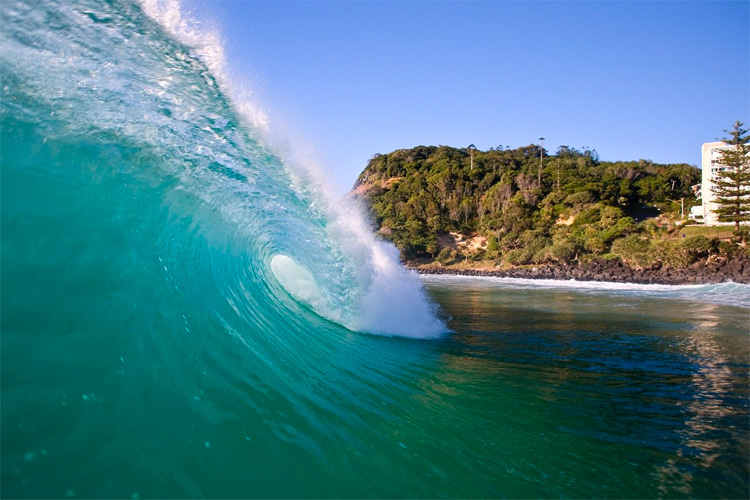
Manly and Freshwater beaches are perfect for a World Surfing Reserve.
The surf is consistent and top-quality, the area has a rich history of surfing, the community has strong support for the designation, and the coastal environment is beautiful.
The beach and rocky shore together provide four kilometers of surf, with regular beach breaks and bigger swells that create reef and point breaks.
From morning to night, there are always waves and always surfers out in them.
Manly has been an important part of Australian history since Governor Phillip met with the local Aboriginal people in 1788.
Over 100 years later, it became a popular beach destination for people in Sydney, leading to the introduction of a number of activities, such as body surfing and surf bathing.
These activities were first recorded in the 1890s, and by 1902, it was the first place to have legal surf bathing. The first surf lifesaving club was founded in 1903, and the first board riding in 1910.
In 1914 and 1915, Duke Kahanamoku even did a surfing exhibition at Freshwater Beach.
World champions Barton Lynch and Layne Beachley also come from here.
This beach and Manly are now known as the "birthplace of surfing in Australia" and have been declared a WSR, which includes Queenscliff, North Steyne, Manly, and Fairy Bower.
People can be seen swimming, surfing, or walking on the boardwalk here. It is a place that will be enjoyed by people now and in the future, with its rich history, culture, and waves.
The WSR is a great surfing destination and includes Manly and Freshwater beaches. The waves here are usually around 1.5 meters but can get bigger.
When the waves are bigger, you can surf places like Queenscliff Bombie reef break, Fairy Bower, and Deadman's Point. These can have waves up to six meters.
Ericeira, Portugal (2011)
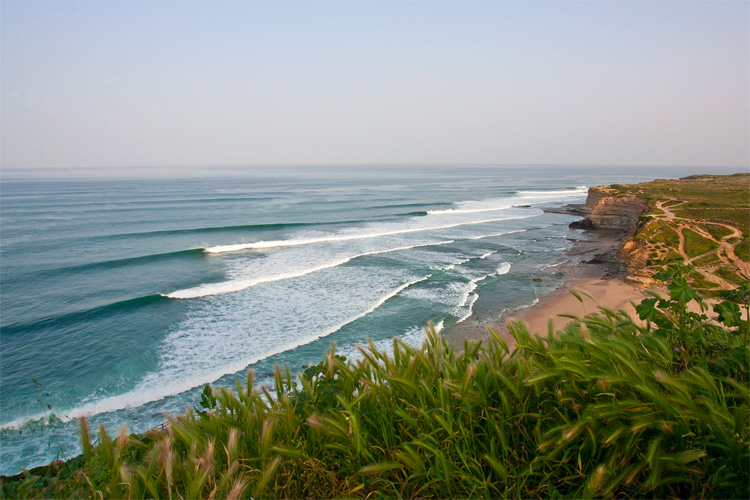
The Ericeira World Surfing Reserve is a world-class surf zone with eight kilometers of coastline. It has many great surf spots, including Ribeira d'Ilhas and Coxos.
The area is known for its rocky cliffs, small bays, and secluded beaches.
Long ago, Ericeira was inhabited by the Jagoz people, who lived off the ocean. Later, members of the royal family and some wealthy people built vacation homes in the area and were the first to sunbathe there.
Surfing first appeared in the mid-1970s, and Ericeira quickly became a popular spot for it.
Many businesses related to surfing have opened, and a professional surfer from Ericeira, Tiago Pires, has competed in the ASP World Tour.
The waves in Ericeira range from easy to difficult, so everyone, from beginners to pros, can enjoy them - beach breaks and powerful reef breaks. There are also many local and international surfing competitions and surf schools.
The best season is from October to May. The coastline is made up of rocky cliffs and small bays with beaches.
The water here is full of nutrients, making it one of the most diverse marine habitats in the world. As a result, you can find a variety of fish, including sardines, tuna, and mackerel.
The Local Stewardship Council wants to ensure the ocean and coastlines stay healthy for everyone to enjoy.
Santa Cruz, California (2011)
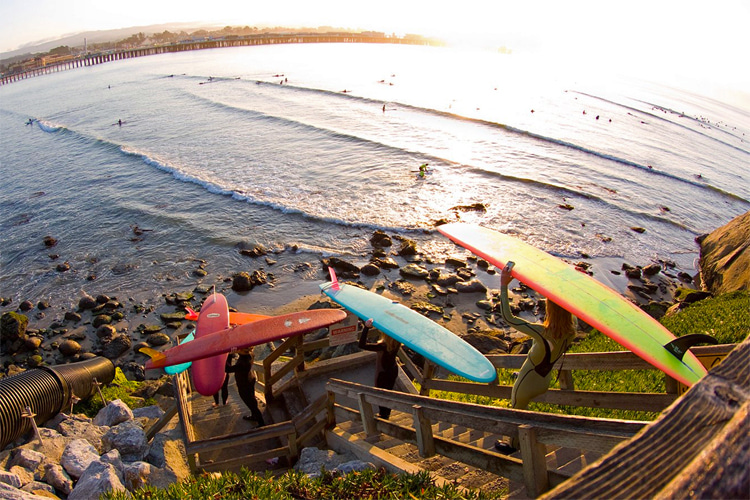
The Santa Cruz World Surfing Reserve is located along the northern side of Monterey Bay on California's Central Coast.
This protected coastal area extends for about seven miles from Natural Bridges State Park in Santa Cruz to Opal Cliffs near Pleasure Point.
This area has world-class surfing spots like Steamer Lane and Pleasure Point, as well as other breaks for surfers of all skill levels.
Surfing competitions, ranging from professional to club to school, are held often.
Beach and surf access are mostly good, and the reserve is managed by the California State Parks, the City of Santa Cruz, and Santa Cruz County.
Santa Cruz has been given the unique title of WSR because of its various surf spots, strong surf culture, and cold water environment that must be protected.
Surfers who have been to Santa Cruz agree that its waves are great and it's the best surf town in the USA.
Along the seven miles of coastline, there are many areas with waves for all levels, from beginner to big-wave riders.
The waves here come from many directions, and the winds are usually good, too. There are at least 23 different surf spots along the coast.
Winter is the best time to surf here, and the waves can vary in difficulty from expert to beginner, so there's something for everyone.
It's also the birthplace of surfing in North America.
Surfing has been around in Santa Cruz since 1885 when three Hawaiian princes surfed with boards made from redwood.
Through the 1900s, a few local surfers kept it going until it became popular in the 1960s.
Now, Santa Cruz is home to many surfers who work to protect the coast from pollution and developers. On good days, you'll find surfers from beginners to experts riding the waves in the cool, green water.
Santa Cruz is a marine protected area within the Monterey Bay National Marine Sanctuary. You can often spot sea otters, seals, sea lions, and various birds.
Plus, you may even see a whale or a great white shark passing through.
The WSR is also working to address water quality at Cowell's Beach, one of the best beginner waves in California.
They collaborate with locals to ensure the water is safe and enjoyable.
Huanchaco, Peru (2013)
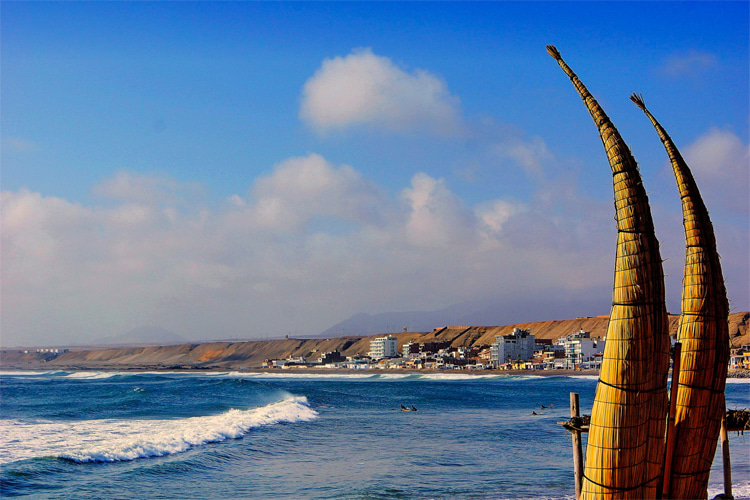
Huanchaco is a popular spot in Peru for its clean, consistent surfing. It also has a rich history dating back to before the time of Columbus.
The local surfers take full advantage of the sandy left-breaking waves that roll onto the sandy beach all year round.
The best time to surf the point break in the middle of town is from April to October when the swell is between 1-3 meters.
It's an ideal performance wave, but even more experienced surfers will find it especially challenging when a large south swell arrives.
Huanchaco, Peru, is a unique surf town. It dates back 3,000 years, and the surfers here use both modern thrusters and ancient fishing boats.
It's believed to be the birthplace of Peru's "caballito de totora," an ancient surf craft.
It was used to ride the waves for work and pleasure, and even today, local fishermen use these crafts to fish and have fun in the waves.
Felipe Pomar, the 1965 world surfing champion, said, "I am pleased that Huanchaco has achieved WSR status. It has a wave-riding tradition that goes back thousands of years. I'm glad that World Surfing Reserves and Peruvians are preserving and protecting this beach."
The hardworking fishermen of Huanchaco and the local and national community support also qualify Huanchaco as a WSR.
Different committees of local and international surf clubs, NGOs, and community leaders are working together to make sure Huanchaco WSR is managed properly.
The Huanchaco Local Stewardship Council, helped by STW, stopped an illegal trash dumpsite in nearby Buenos Aires.
They also aim to protect the wetlands where the native "totora" reeds are grown for making the "caballito de totora."
Additionally, they hope to give permanent legal protection to Huanchaco through Peru's 'Ley de Rompientes' law, the world's first law that protects waves.
Punta de Lobos, Chile (2013)
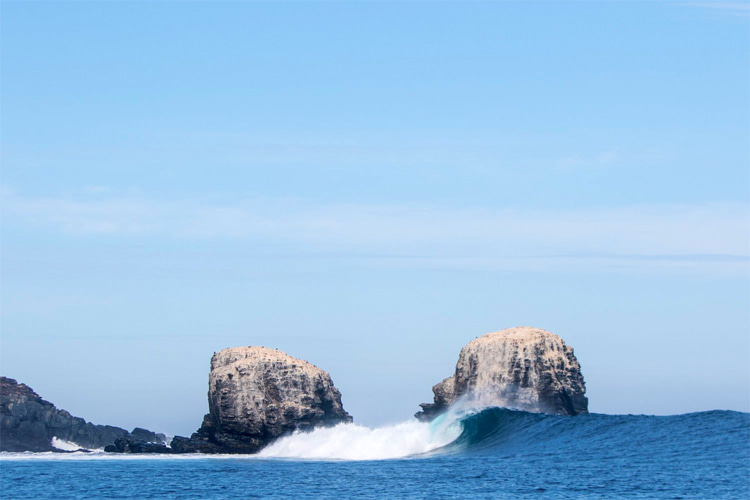
In 2015, Save The Waves and Patagonia worked together to start the "Lobos Por Siempre" campaign.
They wanted to raise money to buy a 4.5-acre piece of land called the Mirador Property. It was at the tip of Punta de Lobos.
Chilean philanthropist Nico Davis held the property and said he would only sell it to the Foundation when the money had been collected.
Thanks to Patagonia, the Marisla Foundation, Packard Foundation, Waitt Foundation, and over 900 small donors, they were able to get more than $750,000.
On November 16th, 2017, the property was transferred to the Foundation and became a World Surfing Reserve.
The Fundación Punta de Lobos is now working to protect the Chilean coastline.
Punta de Lobos is an amazing place that is popular for its waves and surf culture. It is also home to fishermen who hand-harvest kelp, shellfish, and fish.
The point even has its movie, "Fisherman's Son," about a big wave surfer named Ramón Navarro with a long-time connection to the local wave.
Additionally, Punta de Lobos is part of a global biodiversity hotspot, with cold, nutrient-rich water and many different species like whales, sea turtles, penguins, and birds.
The area even has its unique plant species, like the cactus Echinopsis bolligeriana, which is endangered.
Bahia de Todos Santos, Mexico (2013)
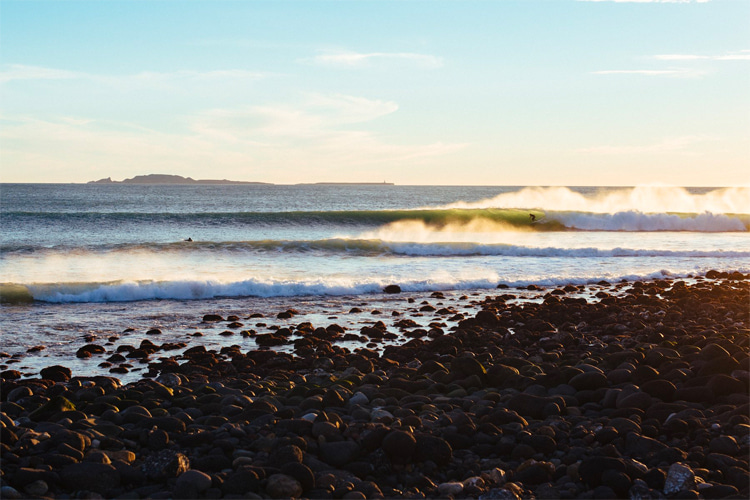
In Mexico, big cities lack many public spaces, so the beach is often used as a park. People from all backgrounds come to the beach to relax, have fun, and fish for food.
Mexico's Pacific coast is known for its excellent surf spots, such as Todos Santos and San Miguel.
Bahía de Todos Santos was chosen as the first World Surfing Reserve in Mexico, recognizing its historical importance, recreational use, and importance for the local economy.
Ensenada is known as the birthplace of Mexican surfing, with a strong culture dating back to the 1960s. The Reserve also looks to protect the area's diverse species and habitats.
The area has excellent waves that can be found within its boundaries. These include Salsipuedes, San Miguel, 3 M's, Stacks, and Killers on Isla Todos Santos.
Swells come in from the north and south all year long, but the best waves come in the winter when the north swell hits.
This area also has a strong surfing culture, with San Miguel being the birthplace of Mexican surf culture.
Surfers have been visiting Ensenada, Baja, California, for years. It was here that the modern surf trip was born.
People from California would go south to surf at San Miguel. This showed the beginning of our current trend of surfers exploring and traveling in search of waves.
Bahia de Todos Santos is an especially popular surf spot with various waves, from point breaks and reefs to beach breaks.
Mexican surf culture has its roots here, with many Mexican and international surfers visiting over the years.
At the center of the WSR in Bahía de Todos Santos is the San Miguel watershed. It's an important ecosystem, providing sand and stones for the classic wave at San Miguel.
The watershed stretches about 120 acres and is one of the least disturbed in Ensenada. It has native elms, oaks, and important wildlife habitat.
Its preservation is important for protecting the habitat, outdoor recreation, and the shore environment of San Miguel.
Save The Waves Coalition and ProNatura are trying to create a beach and riparian reserve at San Miguel with the help of residents and government agencies.
They're asking the governor of Baja California to turn San Miguel and a four-mile stretch of the watershed into a state natural reserve and park.
Gold Coast, Australia (2015)
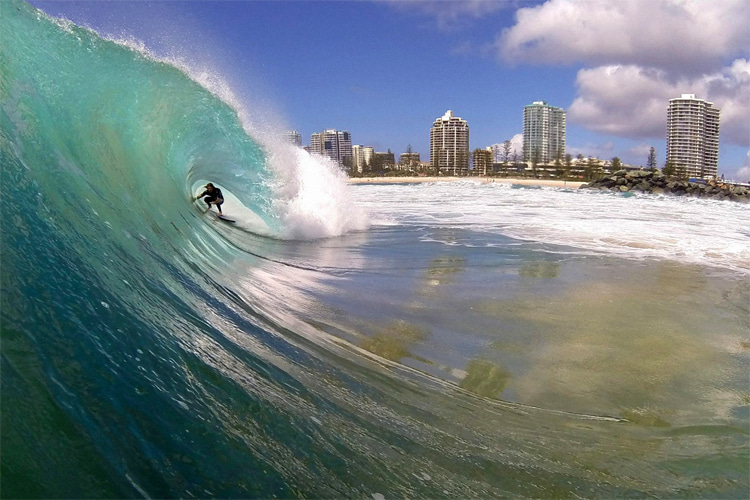
The Gold Coast World Surfing Reserve is a 16-kilometer stretch of coastline along the Queensland/New South Wales border. It starts at Burleigh Point and ends at Snapper Rocks and offers perfect barrels year-round.
In between are several popular surfing spots.
The area has a long history of surfers and other ocean users. It is known for its great point breaks, world surfing champions, and surfing culture.
To ensure it continues to be enjoyed by future generations, the City of Gold Coast has declared it a WSR.
In addition, they have formed a local stewardship committee that will help manage it and provide input on beach and surfing issues for the city.
When you combine some of the best surfing spots on the planet with a passionate surfing community and a commitment to coastal conservation, you get the Gold Coast WSR.
It's supported by local surfers, ocean users, stewards, and government endorsement. The Local Stewardship Council has developed the world's first Surf Management Plan to protect the coast.
Wind and waves have come together to create three famous surfing spots in Australia. Snapper Rocks, Rainbow Bay, and Greenmount Point are all connected by a 20-kilometer stretch of sand.
Depending on the time of year, they can either be connected or separate. These areas provide some of the country's best, most consistent quality waves, especially when the wind is blowing from the south.
Coolangatta Beach used to be a great spot for bodysurfing. In 1972, a big wall - called "the big groyne" - was built at Kirra, followed by sand-pumping activities.
This stretch soon became known as Superbank. To the west, Kirra Point is one of the top surfing sites in the world. It has some of the longest and deepest tube rides.
Heading north, the beach breaks are still good, like the ones near Elephant Rock at Currumbin.
At Currumbin Alley, you can have rides of hundreds of meters.
Palm Beach is also great, with groins and reefs making nice peaks and bottom V-banks, especially around 25th Avenue.
Burleigh is the northernmost point break on the Gold Coast. It is considered one of the best waves in the world.
The coastline from Burleigh Heads to Coolangatta is a beautiful and special place. Its waves and clean ocean have made it a popular destination for surfers from all over the world.
This has enabled a surf culture to become mainstream and has greatly impacted the city of Gold Coast - contributing over $3.3 billion dollars every year.
Indigenous Australians have had a unique relationship with the ocean for thousands of years.
They were the first to surf the Australian shore, using canoes, wooden bodyboards, and rafts.
To this day, Indigenous mobs from around the country celebrate this connection through cultural surfing events, like the Banaam Indigenous Surf Titles at Fingal Beach.
Noosa, Australia (2017)
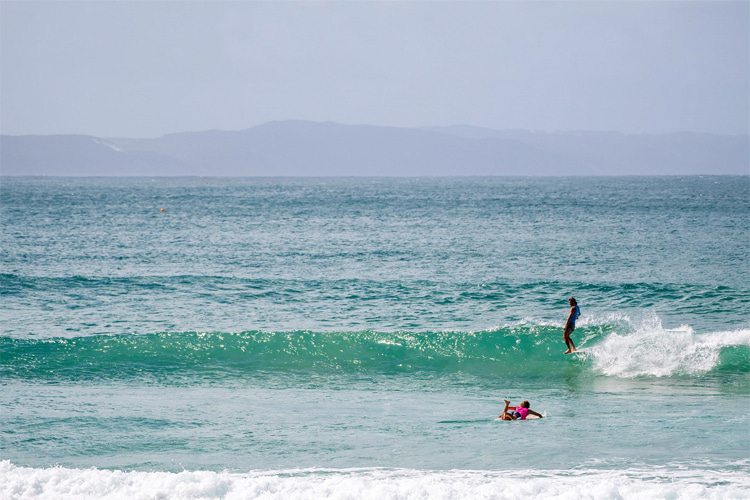
The Noosa World Surfing Reserve is renowned for its high-quality waves.
Its distinct environmental characteristics, surf history, and community support make it an exemplary coastal community dedicated to preserving its resources.
It includes five world-class point breaks and three consistent beach breaks, which provide quality surf in different conditions.
Even if the area experiences swell droughts, especially in late winter and early spring, there are usually still some rideable waves.
Noosa in Queensland, Australia, is home to five well-known point breaks for all skill levels, from beginners to experienced surfers.
Nearly half of these are located within the boundaries of the Noosa National Park, the country's most famous national park. The other breaks are bordered by lands that are privately owned and lands that are designated for park use.
These private lands are subject to building regulations, such as a 4-story height limit, as part of the Noosa Plan.
North Sunshine can handle south swells and offers protection from summer north easterlies, while Noosa West has consistently good sand banks that offer fun waves in southerly wind conditions.
Alexandria Bay is a beach at the northeasternmost point of the Noosa headland. It is a great spot for surfing, especially when other places don't have any waves.
First Point is close to town and can have friendly waves most of the year, while at low tide, it can have sand barrels.
Johnsons - or Little Cove - is usually great for beginners but can also have hollow waves.
National Park has a lot of high-quality waves, and Tea Tree and Granite have long, perfect rides.
The best time to surf Noosa is during cyclone season (December to May), when the swells come from the south.
Noosa gets around 280-300 days of rideable surf each year.
Noosa National Park was created in 1939 and opened by the Governor of Queensland in 1949. It was landlocked, meaning it had no access to the ocean.
The Noosa Shire Council wanted to build a road to connect a new development area and Hastings Street commercial hub.
But this plan would have taken away a large section of land behind Alexandria Bay meant for residential development.
In 1962, Dr. Arthur Harrold and Max Walker created the Noosa Parks Association, Queensland's first conservation group run by the community.
They worked to get the park around the entire headland extended.
Despite the odds, the NPA was successful in 1964. The government of Queensland stopped the plan to build a road along the coast.
This was just the start of a long fight against developers to maintain Noosa's environment.
For the next 30 years, Dr. Harrold and the NPA kept up the fight. Now, the headland is safe, but the NPA is still ready to protect it.
They support the WSR and have people on the committee.
Animals like koalas and brush turkeys are protected in the Noosa National Park. These species are endangered.
Playa Hermosa, Costa Rica (2020)
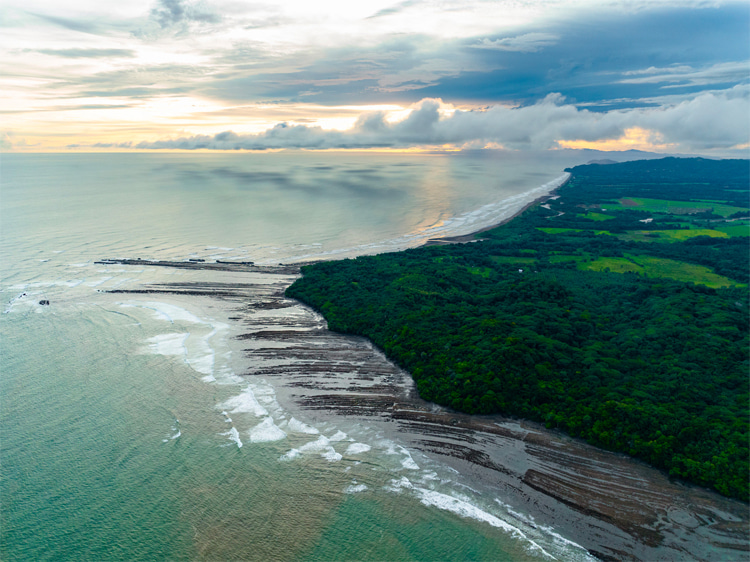
Playa Hermosa has earned its reputation as a world-class surfing beach, and the Local Stewardship Council is determined to maintain that status.
The application for World Surfing Reserve status showed that the beach has incredible biodiversity, strong community support, a clear conservation vision, and world-class waves.
The Council wants to protect the ecosystems and promote sustainable tourism. A national study found that surf tourism brings around $5 million dollars to the local economy.
The Blue Flag environmental program has given the beach one star.
The Council is also looking to get legal protection for the waves and a plan for low-impact tourism. They are even working on a master plan to address challenges like climate change, development, and wastewater treatment.
Playa Hermosa is a popular surf spot in Costa Rica known for its good waves. It is sometimes called the National Surf Stadium of the country.
The beach breaks here can be surfed all year round and are great for competitions.
They also have A-frame peaks that often create tubes. There are 15 different spots in Playa Hermosa, including a point break and river mouth.
It is especially good during the south swell season in the spring, but it is a consistently good spot all year round.
In 1974, people from San José and Palmares started to live in Playa Hermosa. They wanted to get wood from the forest near the beach, and more families came to raise animals.
However, not many people knew about the waves that Playa Hermosa had to offer until the 1970s.
The highway from San José made it easier for surfers to come to Playa Hermosa, and the 2009 ISA World Surfing Games made it famous.
People say Playa Hermosa is a great place for surfers to find the best waves. It's known for its friendly atmosphere and its beach barrels.
People from all over the world come to the beach to surf, and the community is based around surfers.
Playa Hermosa is a fantastic place with many different types of ecosystems.
It is home to 61 threatened species, including three kinds of endangered sea turtles and the famous Scarlet Macaw.
The Punta Mala Wildlife Refuge is a protected area that covers almost 3,000 hectares (7,400 acres). Eighty-two percent of the refuge is water, and it is home to a unique sea turtle hatchery and conservation program.
It's clear that Playa Hermosa is an important place for surfing, and the community wants to keep it that way.
North Devon, United Kingdom (2022)
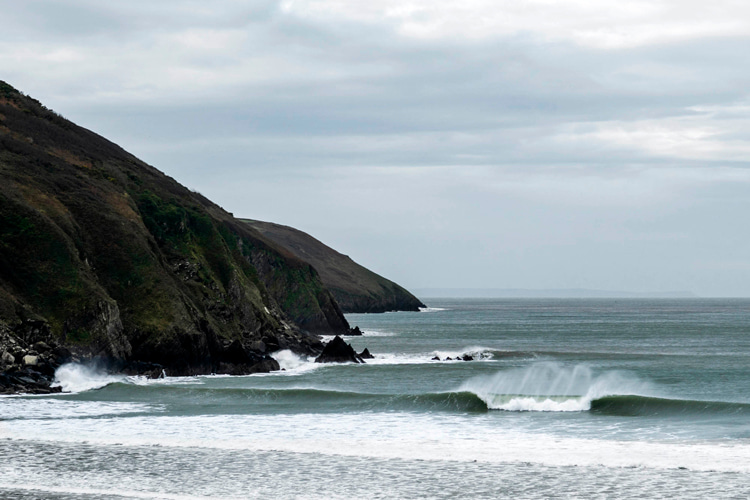
North Devon has been a popular destination for people from the UK since the Victorian era. Londoners used to travel there to enjoy the open coastline.
This area is traditionally a fishing and farming community but has become renowned in the surfing world. It is home to the Museum of British Surfing, and many of the best surfers in the country live there.
The North Devon Surfing Reserve includes around 30 kilometers of coastline with some of the best surfing spots in the world.
Well-known spots like Croyde, Saunton, Woolacombe, and Lynmouth are all part of the reserve.
The UK has a long history of protecting national parks and green areas.
However, the surf zone, the surfing experience, and the fragile environment that produces different kinds of waves are not formally or actively protected.
This is why a Surfing Reserve is necessary. It will give the surfing community and others a say in decisions about Britain's coastlines and best beaches.
A 2008 study found that surfing brought in around £50 million and created 1,500 jobs.
But surfing means more than money. For many in North Devon, the weather, tides, wind, and favorite surfing spots are part of life.
The coast is beautiful, with wild swimming, surf lifesaving, and stand-up paddleboarding.
But, even if you don't participate in any of these activities, you can still enjoy a walk along the wild coastal path. This wonderful, rugged area with its incredible waves has something for everyone.
The North Devon Surf Coast has many surfing spots that work with different waves and wind directions.
These waves suit everyone, from beginners to experienced surfers. This area is one of the most reliable for surfing in the UK, with a mix of rocky coves and long sandy beaches.
There are also coastal paths along the Reserve which offer beautiful views of the beaches and points.
The North Devon WSR is located in a place with special protections.
It is located in an area with the UNESCO Biosphere and Area of Outstanding Natural Beauty. The surf spots to the South are within these areas.
The surf spots to the north are in Exmoor National Park. The surf spots' ecosystem includes special places important for science, conservation, and marine protection.
There is a No Take Zone just offshore, which is the strictest form of marine protection in the UK. It surrounds Lundy Island.
The places around the surf spots also have rivers, estuaries, and sand dunes. These areas are important for animals and plants.
They also help protect the coastline from climate change and create the sand that shapes Croyde Beach and other popular waves in North Devon.
